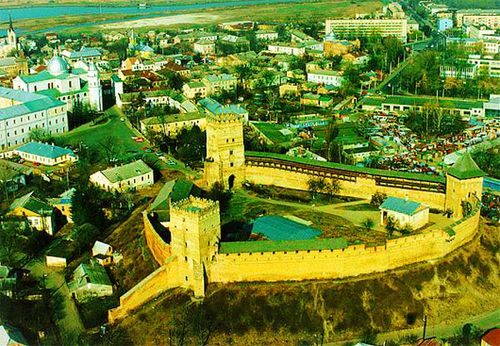Volyn for Travelers
New project launched at Lubart’s Castle in Lutsk. The travel routes crisscross five oblasts: Rivne, Volyn, Ternopil, Zhytomyr, and Khmelnytsky
The new project has a chance to add a new region to the tourist map of Ukraine, equaling the Carpathians, Lviv, Kyiv, Odesa, and the Crimea.
“Traveling in Greater Volyn has been gaining in popularity. People care about history, architectural and cultural monuments, and we have quite a few such sights to show,” head of Volyn Regional State Administration Borys Klimchuk says. “The project will promote traveling in the region, improve its image and help the travel industry’s development.”
The Volyn for Travelers presentation was also attended by the head of Rivne Regional State Administration Vasyl Bertash and chairman of the East-West Unity Foundation Volodymyr Zubanov. The heart of the project is a web portal where everyone will be able to find basic information about traveling directions, the most interesting objects and events, as well as choose a proposed route or lay a course of their own. The region’s most interesting sights feature in promotion videos shot in Lutsk Castle, on the Svitiaz Lake, in Peresopnytsia, Pochaiv Lavra, and the Museum of Amber. They represent diverse tourism potential of the historic Volyn. The prominent and well worth visiting sights include the Cossack Graves and Ostroh and Dubno castles in Rivne region. Shortly before the event, the Research Library of the Rivne National University of Water and Nature Management hosted the presentation of Architectural Heritage of Volyn study, created by the university’s architecture department’s faculty members who have been researching this topic for years led by Doctor of Architecture, Professor Petro Rychkov.
“A colossal layer of Volyn’s monumental and folk architecture needs a new look and a thorough professional analysis,” Candidate of Architecture, Assistant Professor Olha Mykhailyshyn remarks. Professor Rychkov was the first to reveal to the scholarly community and wider world of Volyn architectural antiquities’ admirers documents, plans of cities, castles, forts, palaces, churches, and monasteries which were created under the Polish-Lithuanian Commonwealth and Russian Empire. Most of Rychkov’s studies have revolutionized the field and become an integral part of the architectural history of the region and Ukraine as a whole. Thus, his travel notebook Across the Southern Rivne Region had 100,000 copies printed by Moscow’s Iskusstvo Publishers, went on to become a bestseller, and is a bibliographic rarity now. His research of the architectural legacy of the Ostrozky princes, monuments of Volodymyr-Volynsky, ensemble of Pochaiv Holy Dormition Lavra, and St. George Cathedral in Lviv became classic of the Ukrainian architecture scholarship. Similarly renowned are his studies of architectural monuments in Zhytomyr, Iziaslav, Derman, Nevirkove, Lutsk, and many other cities and towns, villages and estates of Volyn.
Rychkov maintains that bringing back from oblivion the names of architects associated with Volyn has considerable importance for the Ukrainian culture and is a step towards integration of local monuments into European architectural context.
There are 33 items currently on the list of Volyn’s “lost architectural monuments.” Many of them are in Rivne region, including, in particular, Hubkiv Castle in Berezne district, the Stetsky Palace in Velyki Mezhyrychi, Klevan Castle, and Ostroh’s Great Synagogue, Church of the Assumption, Church of the Epiphany, and Tatar Gate.






